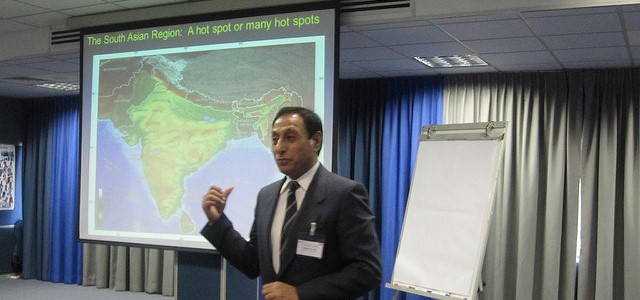Characteristics
Integrated water management approaches require massive amounts of spatially and temporally varying data from many different sectors. This data is most useful if it can be compiled together in one format that allows water managers to see the interactions between different factors over the whole area and through time. Geographic Information Systems (GIS) are designed to serve this function of managing, storing, and analysing all types of spatial and geographical data together in one unit.
The principal of modern GIS is that a variety of types of spatial data can be put into a compatible digital format making it fast and easy to share, sort, and analyse. Many different GIS computer programs exist that will manage data and conduct a wide variety of functions from creating maps, to statistical analysis, to hydrological modelling. Different programs are especially suited to doing different types of analysis, for example hydrological mapping versus human migration.
An example of a widely used GIS tool is Google Maps. A common GIS software program is ArcGIS, which performs very diverse functions and has a water and soil assessment extension available. Free and open source GIS programmes suitable for water resources management in developing countries include QGIS, OpenJUMP, MapWindow, and GvSIG.
GIS data is largely based on the global coordinate system (latitude, longitude, and elevation) and is often collected with a Global Positioning System, better known as GPS, device and from images from satellites or aircraft. This common coordinate system allows users to accurately combine or layer information not previously linked, and to model projections of the future that are representative of the physical world. Analyses using GIS can be done for a small localized area or for the whole globe depending on the data used. In many cases, a significant amount of time is required to collect the data initially and transfer it into digital format. However, once formatted it is very versatile and large amounts of digitised geographical information is shared freely via the internet.
These systems are ideal for water management due to their ability to work with large and detailed data sets on both the temporal and spatial scales. GIS programs are often used for flood prediction mapping, ground water mapping, and precipitation trend mapping. Geographical data is collected by multiple different institutions in most watersheds, making it hard to combine and share, therefore GIS could significantly help IWRM by compiling all local data. GIS programs help practitioners of IWRM to visualize the water resources, for stakeholder engagement and public education through clear visualization of resources, and to identify and project the interactions between multiple natural resources and human actions.
The ability of GIS to be used as a tool for IWRM is limited by access to the appropriate hardware (computer and electricity), software (GIS program compatible with the computer platform and processing speed), and data in the correct format. Knowledge of how to use a GIS program and the capabilities of the software is also a limitation, however there are extensive learning resources available. As well, a GIS program or model can be set up by an external party for a water management body that can be used without an understanding of how it works.
Lessons Learned
- IWRM requires data about local water resources and related natural and human resources, however combining many different types of information can be very challenging and a digital GIS can be very helpful.
- GIS is ideal for managing and analysing large amounts of geographical data.
- It is valuable to share and combine data among management institutions of a watershed and GIS provides an effective way to do so. In some cases, institutions do not want to share the data they have expended valuable resources to collect, this problem must be addressed with other tools for cooperation.
- Modelling and projections done with GIS are helpful for water management planning, particularly with regards to future climate change.
- GIS programmes allow visualization and mapping of data making information comprehensible for a wider range of people.
- The use of GIS for water management is limited by access to hardware, software, and data.

